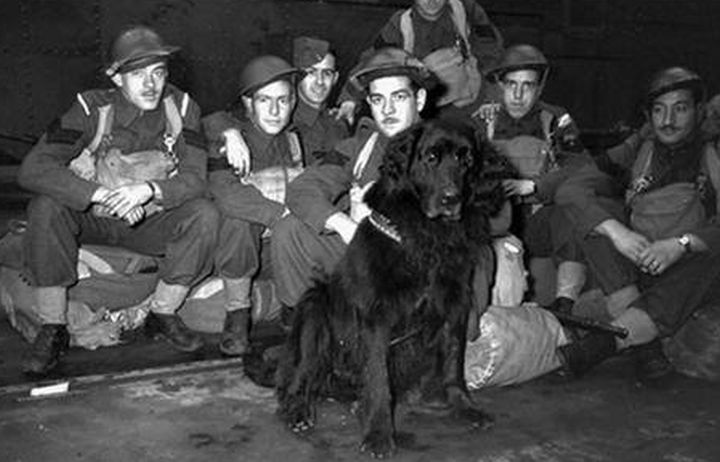As Canadians remember the men and women who risked their lives in times of war, the SPCA is reminding us not to forget the sacrifices and contributions of millions of war animals.

During the First World War, eight million horses were killed and another 2.5 million were injured transporting soldiers, arms and supplies into battle, said Craig Naherniak, BC SPCA general manager of humane education.
Dogs were four-legged soldiers in their own right, rescuing army personnel and civilians, delivering messages, acting as watchdogs and detecting dangerous gases, explosives and landmines.
“Some dogs even parachuted behind enemy lines,” said Naherniak.
But horses and dogs weren’t the only animals to serve in the war.
Brave birds and rodents were sent into tunnels to detect poisonous gas; Donkeys, reindeer and elephants were used to carry heavy loads.
Cats were also put to work, catching rats on ships and carrying messages around their necks in battlefield.

Get daily National news
Carrier pigeons were particularly important during wartimes. With a good sense of direction and the ability to fly up to speeds of 100 kilometres an hour, pigeons flew through nasty weather conditions and direct gunfire to deliver important, life-saving messages.
At army camps, animals were kept as pets to boost the morale amongst troops. Cats and dogs offered comfort and companionship during the dark times of war.
- Sentencing hearing begins for man convicted in gruesome Okanagan double murder
- More questions about Metro Vancouver travel after staff trip to Portugal
- With Canadian dollar trading at 5-year low, what is the effect on the B.C. economy?
- Philippine Airlines makes emergency landing at YVR but issue remains unclear
Naherniak said that even glowworms were used to light maps and messages in the dark without tipping off the enemy.
Last year, the Canadian Animals in War Dedication was unveiled in Ottawa’s Confederation Park to honour the millions of animals that served alongside troops.
The memorial was based on a similar one in London that opened in 2004. The inscription on the Hyde Park memorial reads, “They had no choice.”
Between 1943 and 1949, 54 animals, including carrier pigeons, dogs, horses and one cat have been awarded the Dickin Medal, an honour established to recognize animals that have shown “conspicuous gallantry or devotion to duty while serving…”
After 51 years, the Dickin Medal was revived in 2000 to honour Gander, a Newfoundland dog whose actions saved the lives of Canadian infantrymen during the Battle of Lye Mun in 1941.
Last year, a dog named Theo, who served as an arms and explosives search dog in Afghanistan, was posthumously awarded the medal.
But whether they received an award or not, the BC SPCA is reminding Canadians to remember all the animals who served in wars.
“Countless animals, named and unnamed, have served and saved human lives in the process. This Remembrance Day, let’s remember and honour them all,” Naherniak said.








Comments